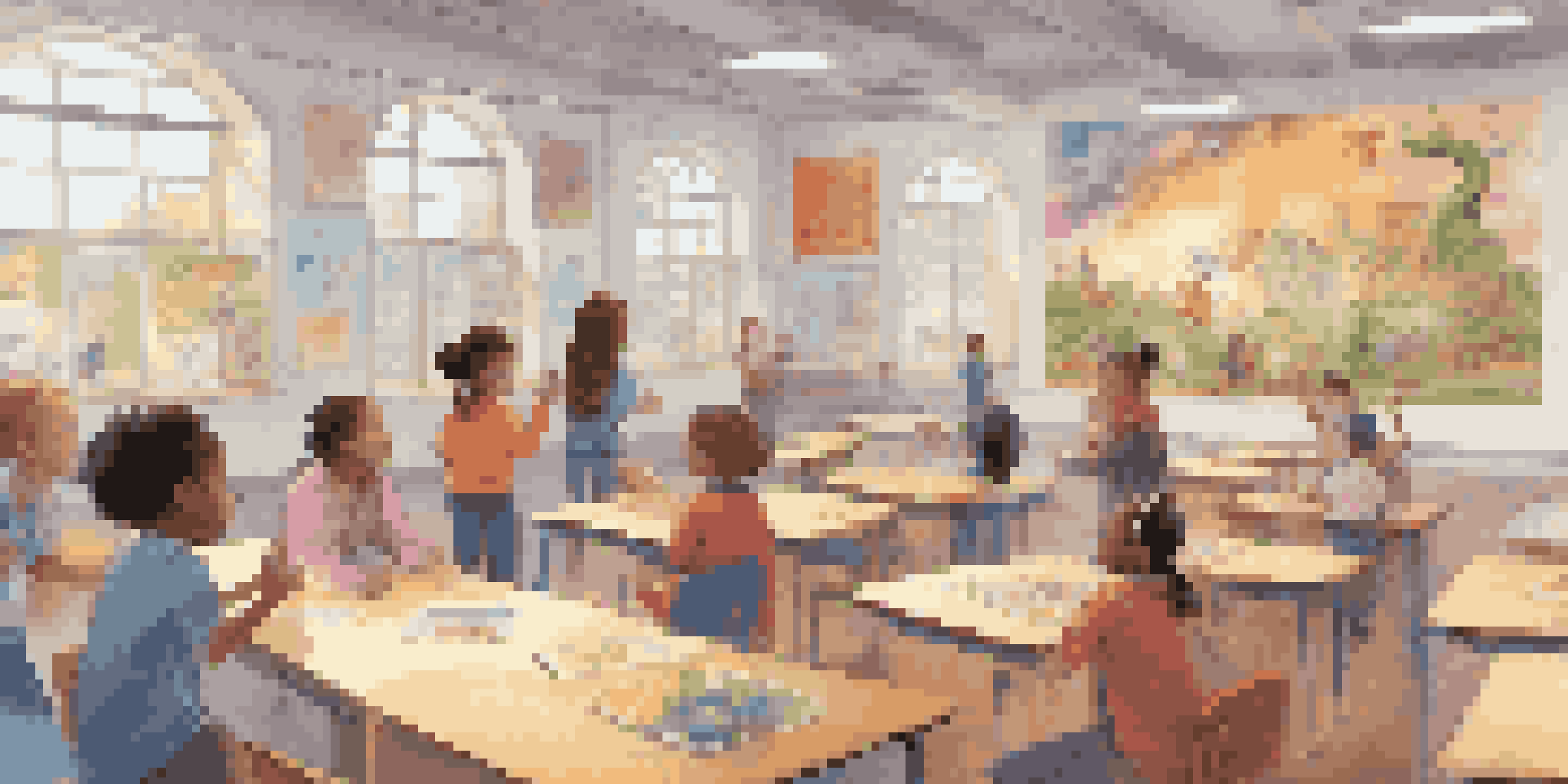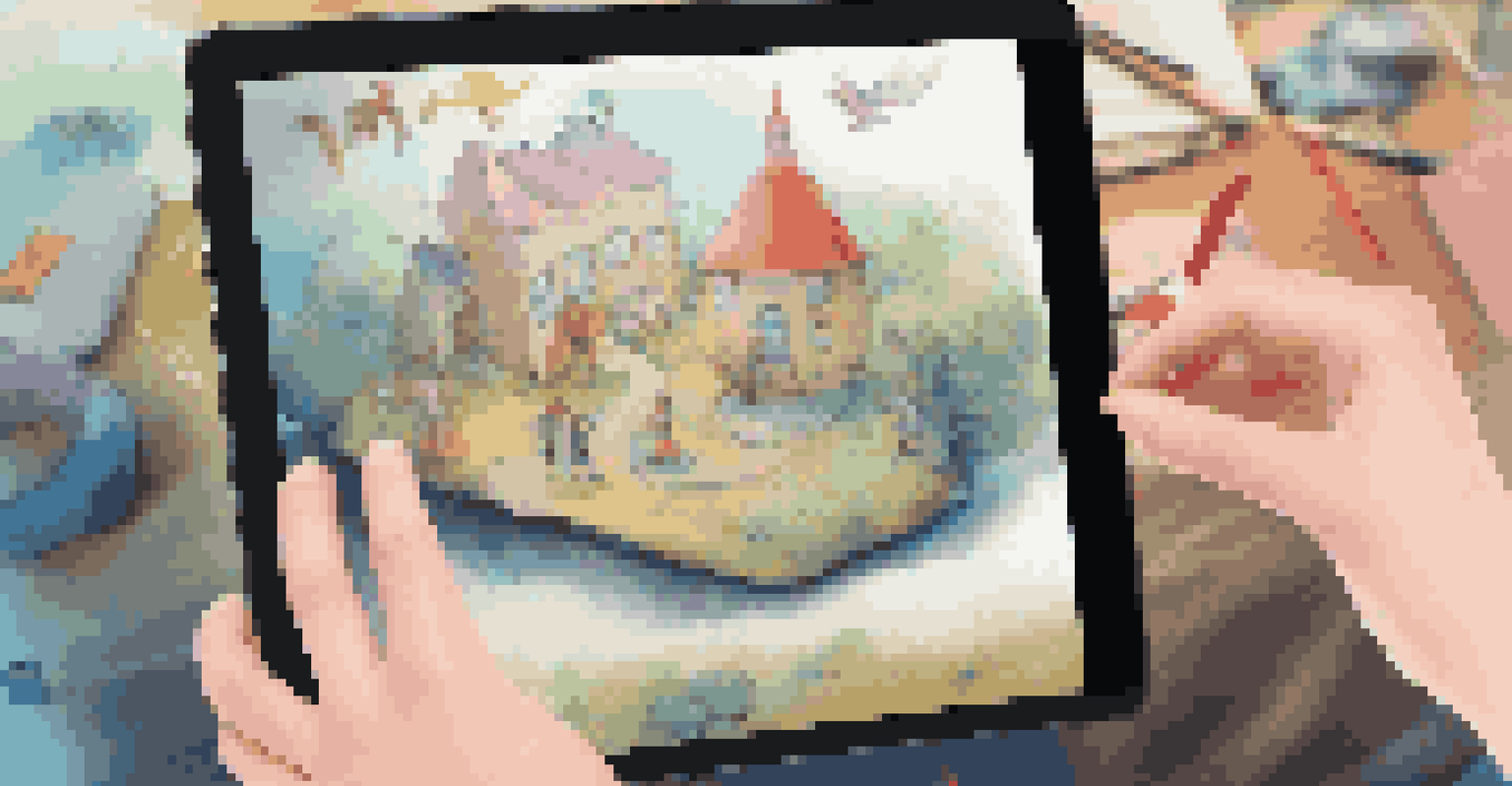Augmented Reality as a Tool for Improving Literacy Skills

Understanding Augmented Reality in Education
Augmented reality (AR) overlays digital information onto the real world, creating an interactive experience. In education, this means students can engage with texts in a more immersive way than traditional methods allow. Imagine reading a story and seeing characters come to life right in front of you—this is the magic of AR.
Technology will never replace great teachers, but technology in the hands of great teachers is transformational.
This technology appeals to various learning styles, making literacy accessible to a broader audience. Visual learners, for example, can benefit significantly from seeing words and their meanings alongside engaging visuals. By integrating AR into literacy instruction, educators can cater to diverse needs, enhancing comprehension and retention.
As AR technology continues to advance, its applications in literacy are becoming more sophisticated and effective. With tools that can recognize text and provide interactive definitions or context, learners can deepen their understanding in real-time. This approach not only makes reading more enjoyable but also fosters a love for learning.
Engagement Through Interactive Storytelling
One of the most exciting ways AR can enhance literacy is through interactive storytelling. Imagine children reading a book, and as they progress, characters leap off the page, engaging them in the story. This interaction can spark curiosity and motivate young readers to dive deeper into the text.

For example, AR applications can enable children to make choices that affect the story's outcome, helping them develop critical thinking and decision-making skills. This level of engagement encourages readers to think critically about the narrative and explore alternative endings or perspectives. It transforms reading from a solitary task into a shared adventure.
Ultimately, this kind of interactive storytelling nurtures a love for reading, as it feels less like a chore and more like a game. When children are excited about what they read, they are more likely to develop strong literacy skills that will benefit them throughout their lives.
Boosting Vocabulary with Augmented Reality
Vocabulary acquisition is a crucial component of literacy, and AR can make this process both fun and effective. By using AR apps, learners can point their device at objects to see related vocabulary words, definitions, and even pronunciation guides. This immediate reinforcement helps solidify new words in their memory.
The future belongs to those who believe in the beauty of their dreams.
Moreover, AR can gamify vocabulary learning by incorporating challenges or quizzes related to the words they encounter. For instance, students might be tasked with finding and defining five AR-tagged objects in their environment. This active engagement promotes retention and makes learning feel like an exciting scavenger hunt.
As students expand their vocabulary in such an engaging manner, they become more confident readers and communicators. The ability to see, hear, and interact with words in context allows learners to grasp meanings more effectively, paving the way for improved writing and comprehension skills.
Developing Comprehension Skills with AR Tools
Comprehension is the ultimate goal of literacy, and AR can play a significant role in developing this skill. With interactive elements, students can engage with texts on a deeper level, asking questions and exploring themes as they go. For instance, AR can provide historical context or character backstories that enrich their understanding of a story.
Additionally, AR can encourage collaborative learning, allowing students to discuss their insights and interpretations with peers. This collaborative approach promotes critical thinking and helps learners articulate their thoughts better. When students can share their perspectives, they gain a more nuanced understanding of the text.
By utilizing AR tools that prompt discussions and reflections, educators can create a more dynamic learning environment. This ultimately leads to stronger comprehension skills, as students learn not just to read words, but to understand and analyze what they mean.
Personalized Learning Experiences with AR
One of the standout advantages of AR in literacy education is its ability to cater to individual learning styles and paces. With personalized AR experiences, students can explore content that resonates with their interests and abilities. For instance, a struggling reader might benefit from a simplified version of a classic tale enhanced with supportive visuals.
These tailored experiences can help build confidence, as learners can progress at their own speed without the pressure of keeping up with peers. For example, an AR app might provide additional support through interactive exercises that adapt to a learner's performance. This ensures that no one gets left behind.
By embracing personalization, educators can foster a more inclusive learning environment where every student feels empowered to succeed. This approach not only improves literacy outcomes but also instills a sense of ownership over learning.
Challenges in Implementing AR for Literacy
Despite its potential, integrating AR into literacy education does come with challenges. One of the biggest hurdles is access to technology, as not all students have the devices required to experience AR. Schools and educators must find ways to bridge this digital divide to ensure equitable learning opportunities.
Additionally, there's a learning curve for teachers who may be unfamiliar with AR tools. Professional development and training are essential to help educators feel confident in using these technologies effectively. Without proper support, the potential benefits of AR may not be fully realized.
Lastly, it’s crucial for educators to balance AR use with traditional literacy practices. While AR can be an exciting tool, it shouldn't replace foundational skills like phonics and comprehension strategies. A blended approach that incorporates both methods can provide a well-rounded literacy education.
The Future of Literacy Education with AR
As technology continues to evolve, the future of literacy education with AR looks promising. Innovations in AR are constantly emerging, offering new ways to engage students and enhance their learning experiences. We can expect more sophisticated tools that will offer richer content and more immersive learning environments.
Additionally, the data collected from AR interactions can provide valuable insights into student progress. Educators can use this information to tailor instruction and support, ensuring that each learner receives the guidance they need. This data-driven approach can lead to more effective literacy interventions.

Ultimately, as AR becomes more integrated into educational practices, we can anticipate a shift in how literacy is taught. By embracing these advancements, we can create a more engaging, personalized, and effective approach to literacy education that prepares students for a rapidly changing world.